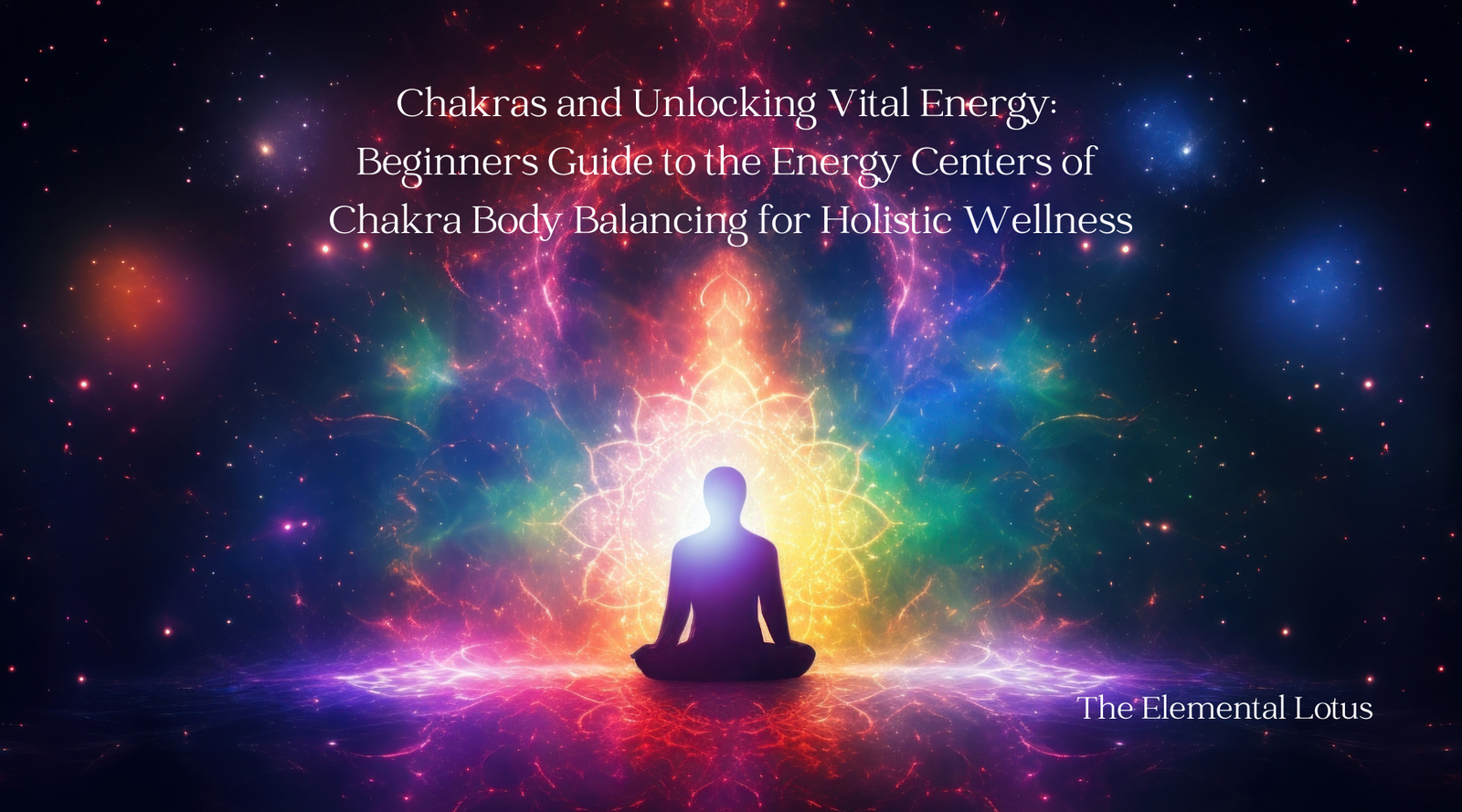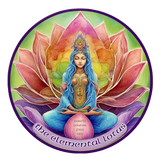Chakras and Unlocking Vital Energy: Beginners Guide to the Energy Centers of Chakra Body Balancing for Holistic Wellness

What are Chakras
Chakras, often depicted as spinning wheels of energy, have gained significant popularity in the Western world in recent years, largely due to their association with holistic healing and alternative medicine practices. Originating from ancient Eastern spiritual traditions, chakras are believed to be vital energy centers within the body, each responsible for specific physical, emotional, and spiritual functions. Understanding and balancing these energy centers is said to promote overall well-being and harmony. In this comprehensive guide, we will delve into the concept of chakras, exploring their history, meanings, and practical implications for present-day wellness.
Exploring the Origins of Chakras
To comprehend the significance of chakras, we must first look to their origins, which can be traced back to ancient Indian spiritual teachings. The concept of chakras is deeply rooted in the belief systems of Hinduism and Buddhism, where they are viewed as points of intersection between the physical and subtle energy bodies. The term "chakra" itself is derived from Sanskrit, meaning "wheel" or "circle," signifying the dynamic, swirling nature of these energy centers.
According to traditional teachings, the human body is believed to contain hundreds of chakras, but there are seven primary chakras that form the core of this energetic framework. The seven main chakras align along the spine, from the base to the crown of the head, and each is associated with specific colors, elements, and attributes.
The Seven Main Chakras and Their Significance
- Root Chakra (Muladhara) - Located at the base of the spine, the root chakra is associated with the color red and symbolizes stability, security, and our basic needs for survival. When the root chakra is balanced, individuals feel a sense of groundedness and safety.
- Sacral Chakra (Swadhisthana) - Situated in the lower abdomen, the sacral chakra is linked to the color orange and is connected to creativity, pleasure, and emotional well-being. A balanced sacral chakra fosters healthy relationships and a sense of abundance in life.
- Solar Plexus Chakra (Manipura) - The solar plexus chakra, positioned in the upper abdomen, is represented by the color yellow and is associated with personal power, confidence, and self-esteem. A balanced solar plexus chakra encourages a strong sense of self-worth and empowerment.
- Heart Chakra (Anahata) - Located in the center of the chest, the heart chakra is symbolized by the color green and is related to love, compassion, and emotional balance. When this chakra is balanced, individuals experience harmonious relationships and empathy.
- Throat Chakra (Vishuddha) - Situated in the throat region, the throat chakra is associated with the color blue and governs communication, self-expression, and authenticity. Balanced throat chakras support clear and honest expression.
- Third Eye Chakra (Ajna) - Positioned between the eyebrows, the third eye chakra is represented by the color indigo and is linked to intuition, perception, and spiritual awareness. A balanced third eye chakra enables individuals to trust their inner guidance and tap into their intuitive wisdom.
- Crown Chakra (Sahasrara) - Located at the crown of the head, the crown chakra is symbolized by the color violet or white and signifies transcendence, spiritual connection, and higher consciousness. When the crown chakra is in balance, individuals experience a deep sense of spiritual fulfillment and unity with the universe.
Balancing and Aligning the Chakras
In the realm of holistic and alternative healing practices, the concept of balancing and aligning the chakras is central to promoting overall well-being and vitality. When the flow of energy within the chakras is obstructed or imbalanced, it is believed to manifest as physical or emotional ailments. Therefore, various techniques and methods have been developed to restore harmony to the chakras and facilitate the free flow of energy throughout the body.
Techniques for Balancing Chakras:
Meditation: Practicing chakra meditation involves focusing on each chakra's specific characteristics and using visualization and breathing techniques to cleanse and energize these energy centers.
Yoga: Certain yoga asanas (postures) are designed to activate and balance the chakras, helping to release any blockages and stimulate the flow of energy.
Sound Healing: Specific sounds and vibrations, such as chanting or using crystal singing bowls, are thought to resonate with the frequency of each chakra, promoting energetic balance.
Energy Healing: Modalities like Reiki, acupuncture, and crystal therapy aim to restore harmony to the chakras by channeling or manipulating subtle energies within the body.
By incorporating these practices into one's self-care routine, individuals seek to achieve a state of equilibrium and alignment within their energy centers, thereby fostering a greater sense of inner harmony and vitality.
The Role of Chakras in Modern Wellness
In recent years, the interest in chakras has transcended traditional spiritual and philosophical circles, making its way into the realms of mainstream wellness and personal development. Many individuals are drawn to the concept of chakras as a means to explore their inner landscape, enhance self-awareness, and cultivate a deeper understanding of mind-body connections.
The practice of working with chakras has also found its place within various holistic and complementary therapies, including energy medicine, mindfulness practices, and integrative wellness approaches. The holistic approach to well-being emphasizes the interconnectedness of physical, emotional, and spiritual health, making the concept of chakras particularly relevant in fostering a comprehensive understanding of human vitality.
Conclusion
Chakras represent a rich tapestry of ancient wisdom and spiritual insight, offering a framework for understanding the subtle nuances of human experience and consciousness. When approached with openness and a spirit of inquiry, exploring the concept of chakras can provide individuals with valuable insights into their own energetic patterns and contribute to their physical, emotional, and spiritual well-being.
In today's fast-paced world, where stress and imbalance are prevalent, incorporating the principles of chakra healing and balance into one's lifestyle can serve as a pathway to greater self-discovery and holistic wellness. Whether through meditation, yoga, or other healing modalities, the exploration of chakras invites individuals to embark on a journey of self-exploration, inner transformation, and the cultivation of a harmonious and vibrant life.

